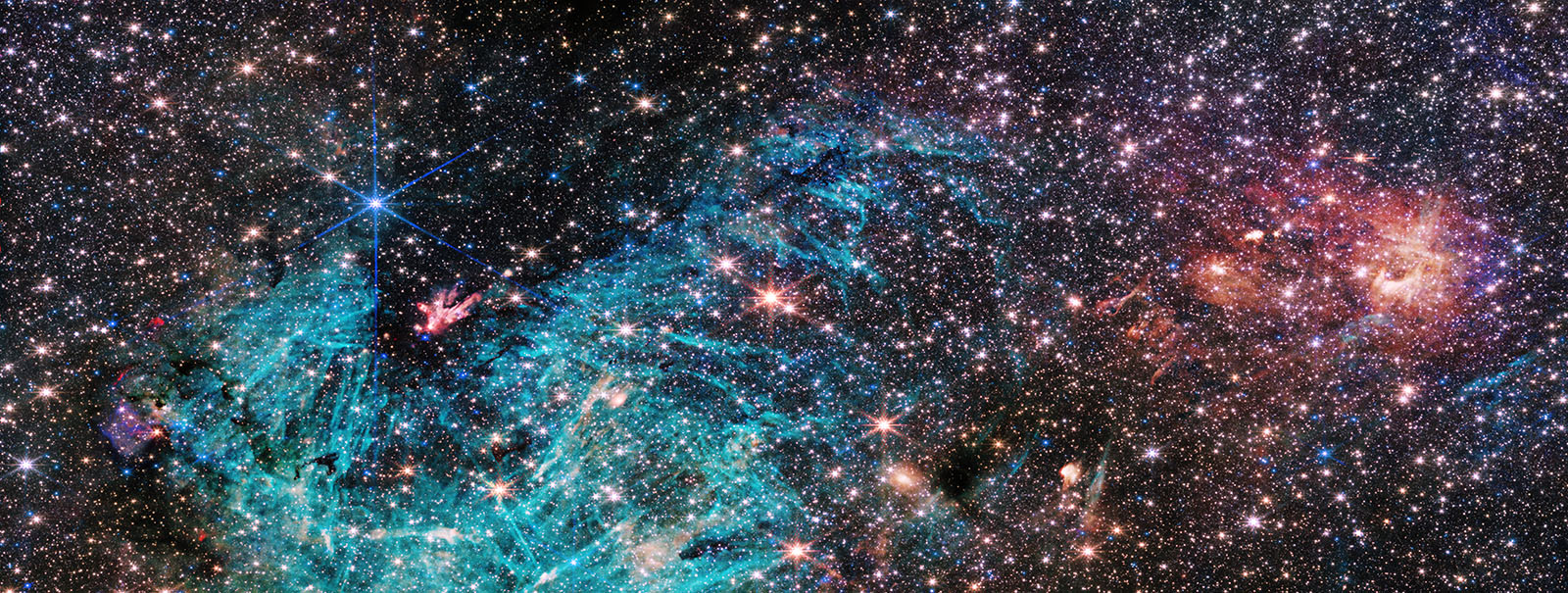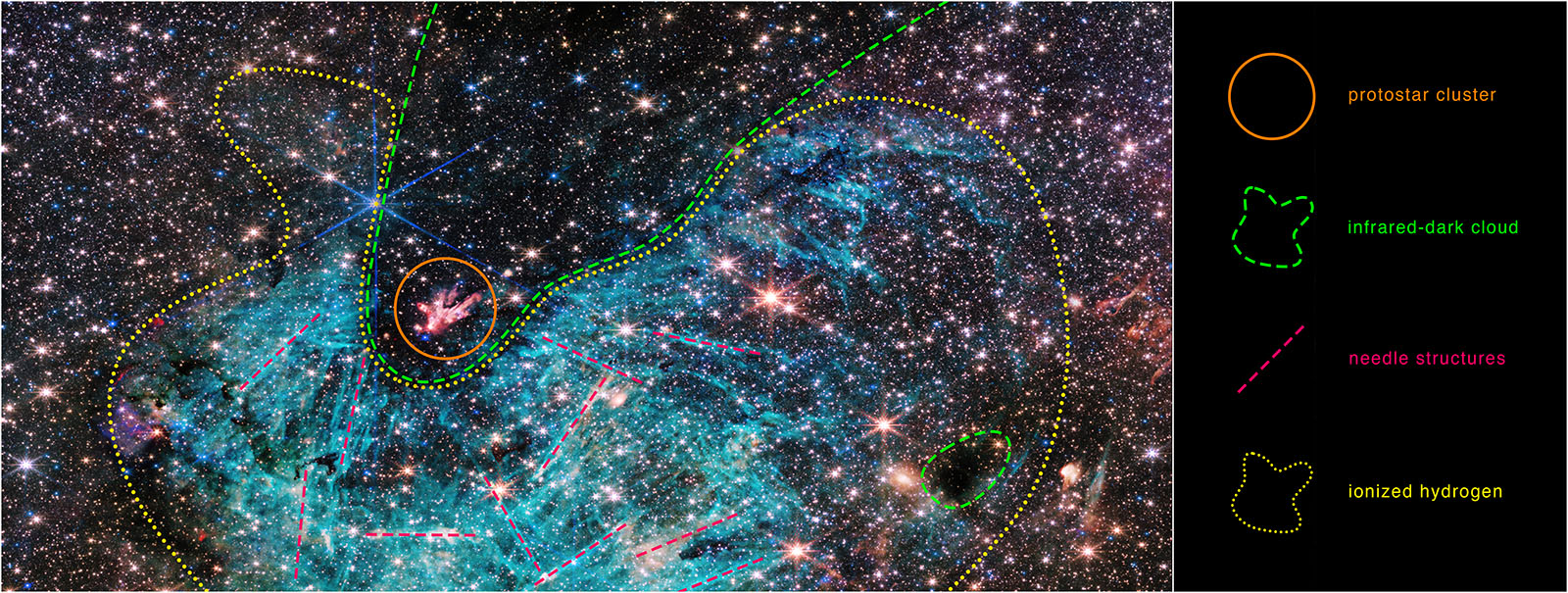
The latest image from the James Webb Space Telescope reveals an incredibly dense region of the center of the Milky Way galaxy in unprecedented detail, showing never-before-seen features of Earth’s neighborhood that astronomers still cannot explain.
It is always incredible to see deep space, but there is something more fascinating about the unexplainable cosmic events happening on Earth’s doorstep, relatively speaking. Webb’s newest subject is the star-forming region Sagittarius C (Sgr C), located about 300 light-years from the Milky Way’s central — and still mysterious — supermassive black hole, Sagittarius A*.
Thanks to Webb’s advanced optics, including its unmatched resolution and sensitivity, scientists can see features of Sgr C that have never been imaged before.
“Webb reveals an incredible amount of detail, allowing us to study star formation in this sort of environment in a way that wasn’t possible previously,” explains the observation team’s principal investigator, Samuel Crowe. While leading this set of observations, Crowe is only an undergraduate student at the University of Virginia.
“The galactic center is the most extreme environment in our Milky Way galaxy, where current theories of star formation can be put to their most rigorous test,” adds Professor Jonathan Tan, one of Crowe’s advisors at the University of Virginia in Charlottesville.
Webb’s new image, captured by the $10 billion space telescope’s NIRCam instrument, includes an estimated 500,000 visible stars.
Among the half a million stars are protostars, stars still forming and accruing mass. These protostars produce outflows that “glow like a bonfire in the midst of an infrared-dark cloud,” writes the Webb Space Telescope team in a news release. The outflows suggest that the stars are preparing to exit the protective cocoon of gas where they are born and will soon “join the ranks of the more mature stars around them.”
At the heart of the star cluster is a previously known protostar with more than 30 times the mass of the Sun. The cloud from which the protostars are emerging adds a bit of deception to the stunning new photo. While the protostar-heavy region appears darkest and most sparsely populated, it is one of the most densely-packed regions. While Webb is great at peering through dense clouds of dust, even it cannot fully penetrate this busy star-forming region to see the background littered with stars.
There are some smaller infrared-dark clouds dotting the image, which look like “holes in the starfield.” These areas are where future full-fledged stars are in the process of forming.

The cyan-colored portion of the image, only visible thanks to Webb’s numerous infrared-wavelength filters, shows the large-scale emission of ionized hydrogen. Crowe explains that this is typically due to energetic photons being emitted by young, massive stars. However, the region’s size, which is about 25 light-years in scale, suggests something else is going on. This surprising discovery requires further investigation.
Webb has uncovered more puzzling details that raise new questions, including the needle-like structures in the ionized hydrogen gas, which are unexpectedly chaotic and oddly oriented, and the rose-colored cloud to the right of the frame that so far evades explanation.
“The galactic center is a crowded, tumultuous place. There are turbulent, magnetized gas clouds that are forming stars, which then impact the surrounding gas with their outflowing winds, jets, and radiation,” says Rubén Fedriani, a co-investigator of the project at the Instituto Astrofísica de Andalucía in Spain. “Webb has provided us with a ton of data on this extreme environment, and we are just starting to dig into it.”
Located just 25,000 light-years from Earth, the Milky Way’s galactic center is ripe for more investigations by Webb. Astronomers can gather information about individual stars, star formation, and how the cosmic environment influences the life cycle of stars in ways that were previously impossible.
“The image from Webb is stunning, and the science we will get from it is even better,” says Crowe. “Massive stars are factories that produce heavy elements in their nuclear cores, so understanding them better is like learning the origin story of much of the Universe.”
Image credits: NASA, ESA, CSA, STScI, Samuel Crowe (UVA). The image was created with Webb data from proposal 4147 and processed by Alyssa Pagan of STScI. Webb made the necessary exposures on September 22, 2023, and used filters F162M (blue), F360M (orange), F405N (cyan), and F470N (red).
